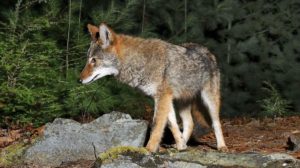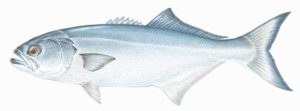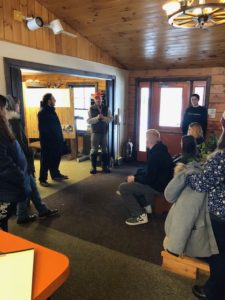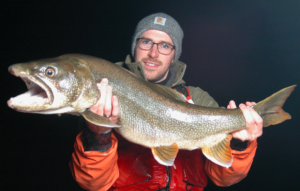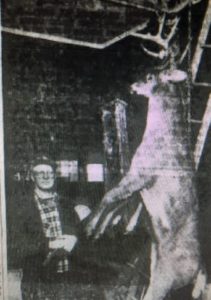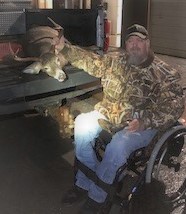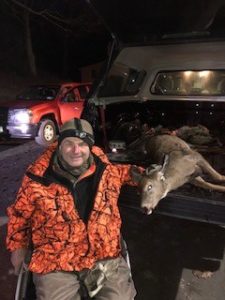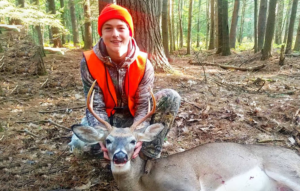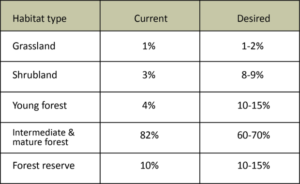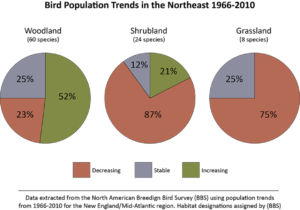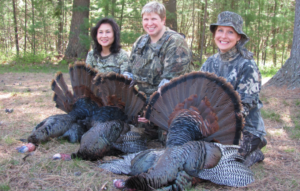Its that time of year again and for long-time readers of this column, you have read the following many times. Please bear with me again in passing on MassWildlife’s warning about ice thickness. There are always new people taking up the sport of ice fishing or ice skating. There may also be some people who have recently moved north and are not familiar with the dangers of walking out onto our ice-covered lakes. Actually, it wouldn’t hurt if we all took a few moments to review these ice safety tips and ice thickness guidelines. The following comments are taken nearly verbatim from the MassWildlife web site:
How can you tell if ice is safe?
There are no guarantees. Always consider ice to be potentially dangerous. You can’t judge ice conditions by appearance or thickness alone; many other factors like water depth, size of waterbody, water chemistry, currents, snow cover, age of ice, and local weather conditions impact ice strength.
Ice tips to remember:
• New ice is stronger than old ice. Four inches of clear, newly formed ice may support one person on foot, while a foot or more of old, partially thawed ice may not.
• Ice doesn’t freeze uniformly. Continue to check ice conditions frequently as you venture out onto the ice.
• Ice formed over flowing water and currents is often more dangerous. Avoid traveling onto ice-bound rivers and streams, as the currents make ice thickness unpredictable. Many lakes and ponds may contain spring holes and other areas of currents that can create deceptively dangerous thin spots.
Before heading out onto the ice
• Tell someone your plans, including where you are going and when you expect to return.
• Go prepared. Carry a cell phone in case of emergency. Always carry ice picks and rope with you on the ice. In case of emergency, drive the picks into the ice and pull yourself to safety while kicking.
• They suggest that you wear a life jacket. If you can get it over all of your heavy clothes, it will keep you at the surface and can provide insulation against the effects of cold water.
Ice thickness guidelines
The guidelines below are for clear, blue ice on lakes and ponds. White ice or snow ice is only about half as strong as new clear ice and can be very treacherous. Use an ice chisel or auger to make a hole in the ice and determine its thickness and condition.
Ice Thickness (inches) Permissible Load (on new clear/blue ice on lakes or ponds)
2″ or less STAY OFF!
4″ Ice fishing or other activities on foot
5″ Snowmobile or ATV
8″–12″ Car or small pickup truck
12″–15″ Medium truck
If you fall in:
• Don’t panic: Call for help if there are people nearby.
• Don’t remove winter clothing: Air trapped in your clothes can provide warmth and help you float.
• Turn the direction you came from: Ice you previously walked on should be the safest.
• Place your hands and arms on an unbroken surface and kick your legs: If you have ice picks, use them to pull yourself up onto the ice while kicking.
• Lie flat and roll away: Once your torso is on firm ice, roll toward thicker ice to distribute your weight.
• Find shelter and get warm: If possible, change out of wet clothing and put on warm, dry coverings. If you are in a remote area, get to or start a campfire. Otherwise, get to a car or house. Seek medical advice from your physician on medical attention.
If someone else falls in:
Remember the phrase “Preach-Reach-Throw-Go.”
• Preach: Call 911 if you can. Shout to the victim to reassure them help is on the way.
• Reach: If you can safely reach them from shore, extend an object like a rope, jumper cables, tree branch, or ladder to them.
• Throw: Toss one end of a rope or something that will float to the victim.
• Go: If the situation is too dangerous for you to perform a rescue, call 911 or go to find help. Untrained rescuers can become victims themselves.
If a pet falls in: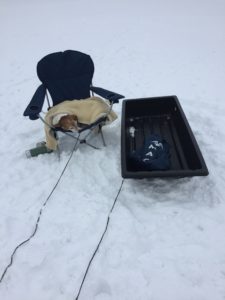
Do not attempt to rescue the pet, go find help. Well-meaning pet owners have become victims themselves when trying to assist their pets. Remember to always keep pets leashed while walking on or near ice.
Outdoor Recreation in the Berkshires
Berkshire Regional Planning Commission (BRPC) is requesting your input for a Berkshire County Outdoor Recreation Plan. They encourage outdoor sportsmen and women to take a 10 to 15-minute survey at surveymonkey.com/r/BRKOutdoorRec.
On Wednesday, January 8 they would like to hear more of what you want in terms of outdoor recreation experiences in the Berkshires. Join them at Hotel on North from 5:00 to 7:00pm. Space is limited, so register in advance at www.bit.ly/BRKORforum.
Outdoorsmen and women, this is your opportunity to have input in developing a Berkshire County Outdoor Recreation plan. Don’t pass it up!
Did you get, kill or harvest a deer this year?
Every year I get phone calls or emails regarding the use of the words “deer harvest” in this column. “Call it what it is”, they say, “it’s the killing of deer”. Perhaps you have read similar letters in the Berkshire Eagle’s “Letters to the Editor” this fall.
Hunters, raise your hand if anyone ever asked if you “harvested” a deer. I thought so, me neither. Have you ever asked other hunters if they “harvested” a deer? Of course not. Like me, you probably equate the term “harvest” to farming, as in harvesting a crop.
The first time I saw the term “harvest” was from news releases from MassWildlife, and when passing on such information, I am not about to change their words. It was my feeling that they used that term because MassWildlife handles the lands under its control in such a way as to make it more hospitable for deer and to maximize their food sources (acorns, apples, browse, etc.). They control the deer numbers so that they have optimal conditions, which makes for a happy, healthy herd. Much like a livestock farmer does.
I discussed this subject with DFW Western District Supervisor Andrew Madden recently, and he said that the term “harvest” is used not just by MassWildlife, but also by most wildlife biologists nationwide. “Harvest” is the general term used for the killing and utilization of the animals.” “Also, using the term “harvest” allows the distinction between animals that are legally taken and utilized by hunters versus other types of mortality such as roadkill, nuisance animals, etc.”
Hunters that I know usually don’t use the term “kill” either. Hunters rarely ask another if he “killed” a deer. They use the term “get” or “got.” Perhaps they avoid using the “kill” word because of the negative connotation that goes with it. Hunters don’t like to be referred to as killers, just like farmers don’t like to be called that either. Farmers prefer to use the term “butcher”. They butcher their chickens or steer, not kill them. Perhaps a few hunters use the term “shoot” or “shot”, but none that I know. They just don’t ask one another if they shot a deer, they ask if they “got” a deer.
About the only time I hear a hunter use the word “shot” or “bagged” is when he is talking about small game hunting. For example, I shot two rabbits today, or did you bag any pheasants? Nobody has ever asked me if I “got” a pheasant.
To me, the word “kill” is usually used when describing a murder or taking down an enemy on the battlefield. The only time I hear a hunter use the term kill is when he is referring to eliminating a predator animal, such as a coyote.
Let’s face it, some people who are anti-hunting like to use the word “kill.” It is frequently used to put the hunter in a negative light. Well, as they say, words have meaning, and most people suspect that word was chosen for a reason. Just remember, unless you are a vegetarian, chances are good that you will be dining on something today that was “killed”. You probably prefer to use the word “processed”.
It’s interesting that the term “kill” is rarely used when discussing fishing. Fishermen “catch” or “land” a fish. They don’t like to be referred to as killers either.
At this time of year, a character frequently thought of is that skeletal figure in a long-hooded robe who carries a scythe, known as the grim reaper. How come nobody is jumping all over him? We all know what he does.
Happy new year!

